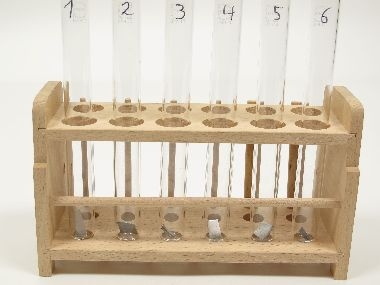setTimeout(function(){
window.print();
},500)

Technical data The effects of acids on metalsArticle no: P7157500  Principle In general acids are highly caustic. In addition acids can also be used as an oxidizing agent, they react with metals. The results of this reaction are the corresponding salts ("metal cation and the acid anion") and hydrogen. In this experiment students examine the reactivity of various acids with metals. Students verify that in this reaction hydrogen is produced. Evaporation of the reaction solution leads to a water-soluble and crystalline compound that serves as "proof" that the reaction of acids and metals form salts.
Learning objectives
Benefits
Scope of delivery
| ||||||||||||||||||||||||||||||||||||||||||||||||||||||
PHYWE Systeme GmbH & Co. KG
Robert-Bosch-Breite 10 – 37079 Göttingen – Germany
www.phywe.com
Robert-Bosch-Breite 10 – 37079 Göttingen – Germany
www.phywe.com

